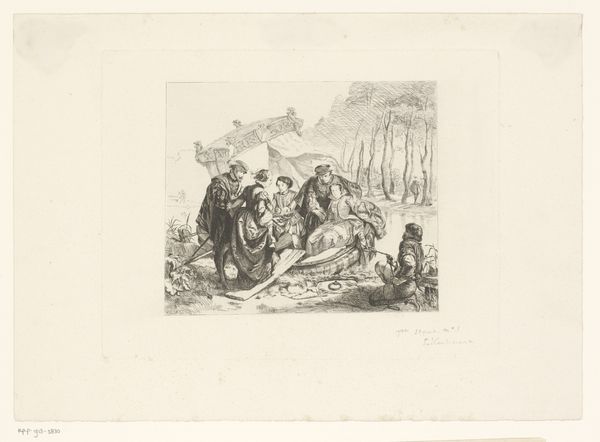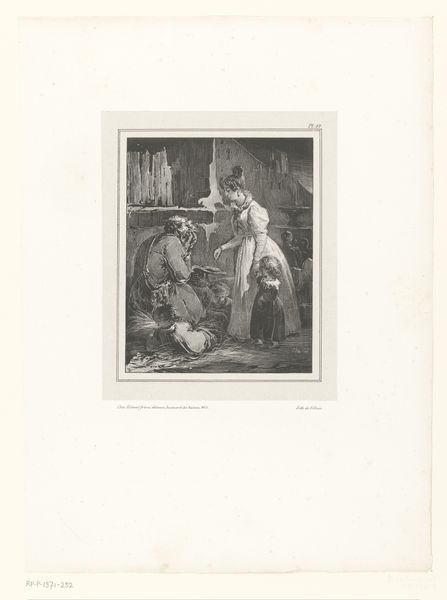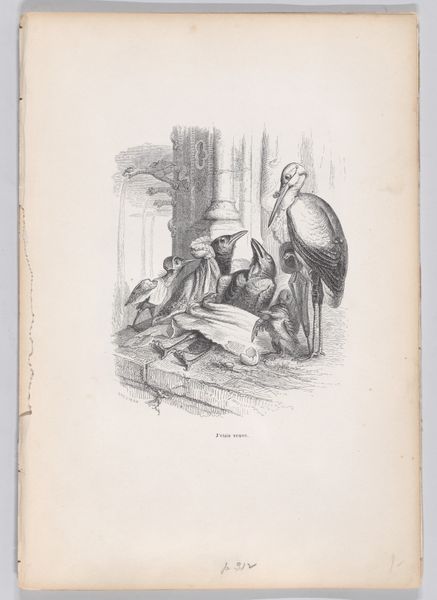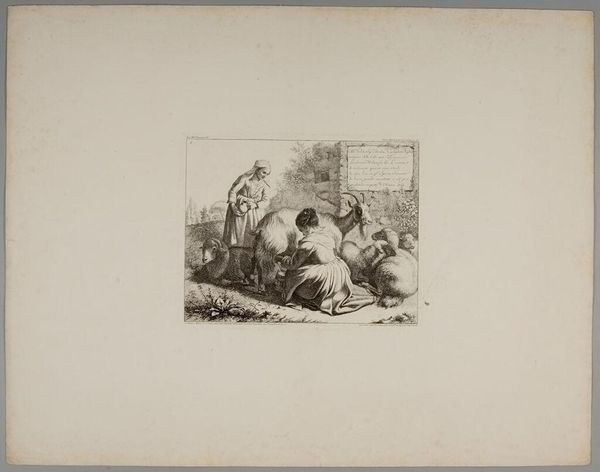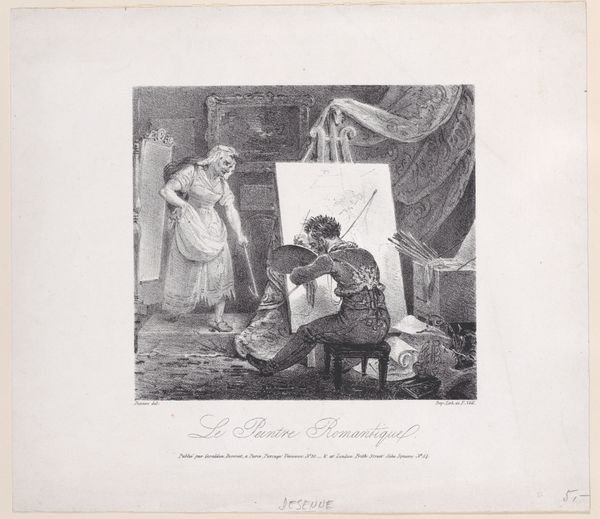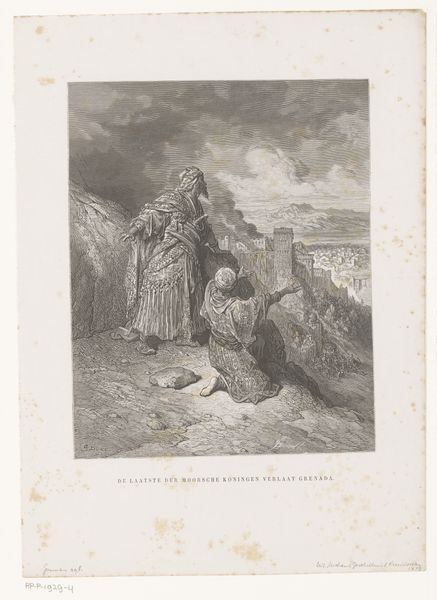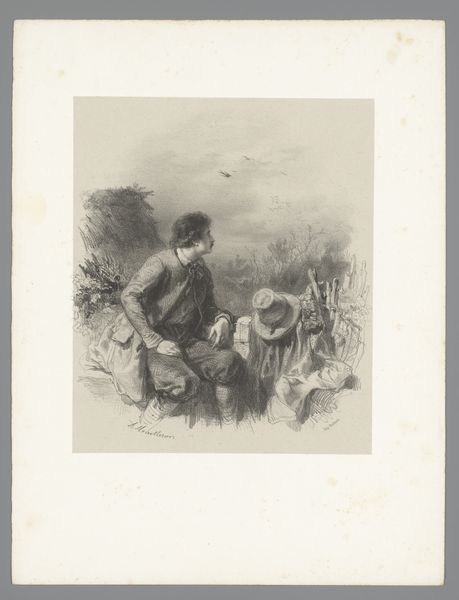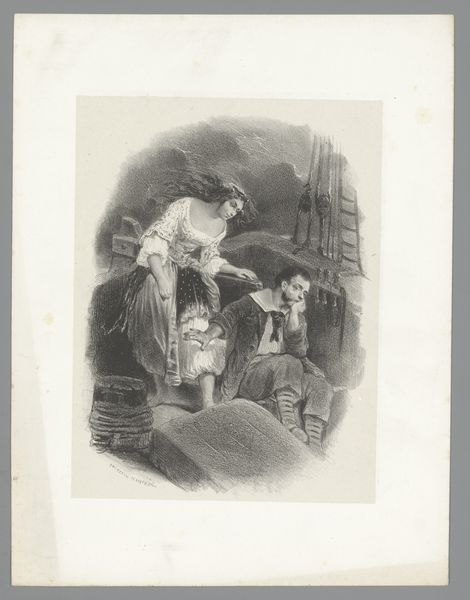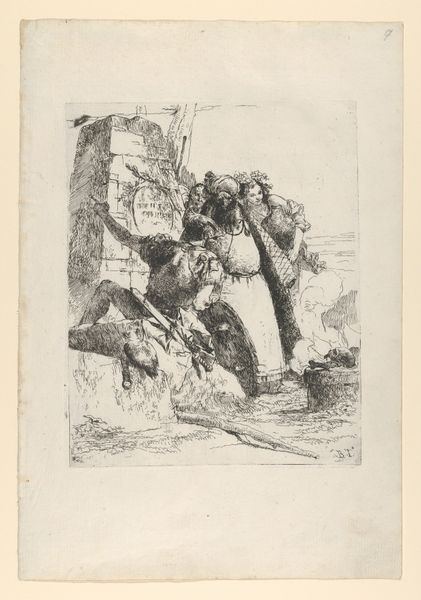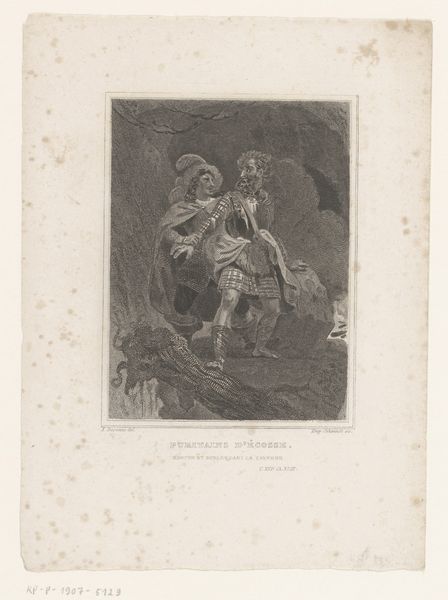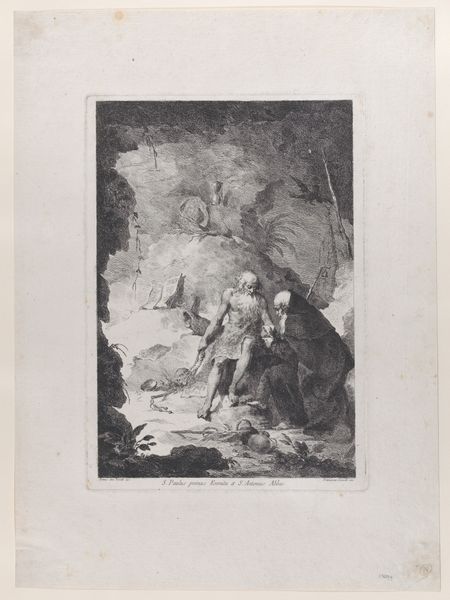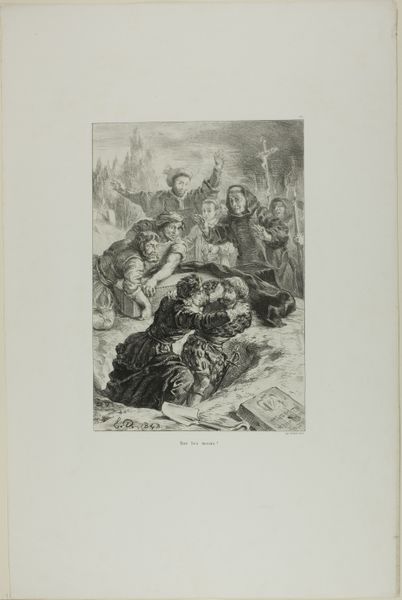
Dimensions: 201 × 162 mm (image); 352 × 254 mm (sheet)
Copyright: Public Domain
Curator: Allow me to introduce “Les Propos de Thomas Vireloque: Misère-et-corde!,” a lithograph on paper created in 1852 by Paul Gavarni. Editor: Immediately, I am struck by the intricate linework and the implied narrative; the composition, although seemingly chaotic, creates a compelling sense of depth and movement. It's Romantic in essence. Curator: Indeed. Gavarni, working in mid-19th century France, was known for his insightful depictions of Parisian life. This print exemplifies the genre-painting trend gaining prominence during that era, shedding light on societal dynamics. Editor: The way the artist manipulates light and shadow to delineate forms is particularly striking. Notice the sharp contrast around the figures, a semiotic device underscoring a theme of struggle and perhaps marginalization? The overall texture conveys something beyond just the literal image. Curator: Exactly! The themes here resonate with the increasing social awareness in France after the 1848 Revolution. It is difficult not to look at these children preparing what looks like a trap and avoid pondering larger questions of class division and poverty in the cities at this time. We see the rising concern among social commentators towards those who were left behind in times of great wealth. Editor: The medium of lithography is key to its message; the reproduction of images becomes easier and allows a larger portion of the population to interact with visual arts and absorb socio-political commentary in accessible forms. It is hard to ignore this work's profound social consciousness. Curator: And, of course, the title itself—Misère-et-corde! translated to misery and rope alludes to a tragic aspect of Parisian street life that, though difficult to accept, deserves acknowledgment as a facet of social history. Editor: Looking at it again, there’s a sophisticated asymmetry here, isn't there? The positioning of each figure within the pictorial plane provides balance, contributing to a complex reading of tension. Curator: It's a print that demands attention and beckons exploration. Gavarni presents not just an image, but also an enduring glimpse into nineteenth-century Parisian realities. Editor: I find that this analysis reinforces its appeal for contemporary audiences interested in comprehending the relationship between technique, history, and emotional depth.
Comments
No comments
Be the first to comment and join the conversation on the ultimate creative platform.


